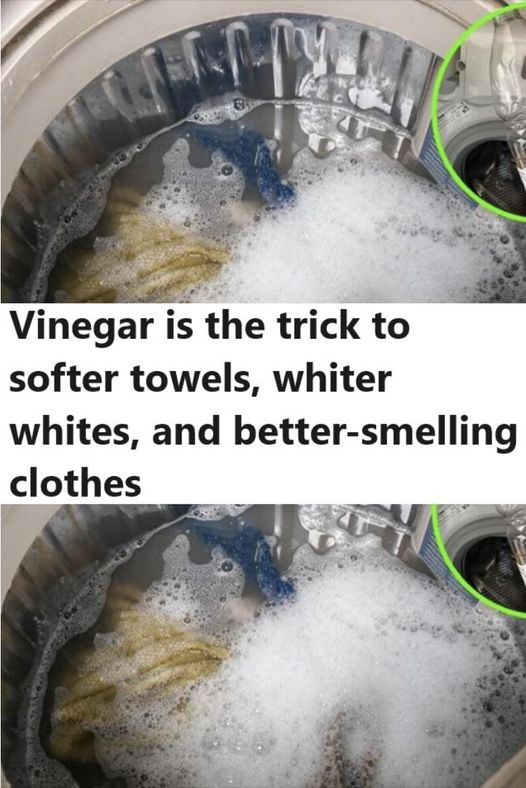
You probably use vinegar in your kitchen for salad dressings or pickles. If you care about the environment, you might also use it to clean your counters. But did you know that vinegar can be a great addition to your laundry routine too? It’s cheap, better for your health, and good for the environment.
Distilled white vinegar has many uses. In your laundry, it can remove stains, soften towels, and get rid of odors. Vinegar is very acidic, with a pH of 2.5, which makes it a powerful cleaning agent. This acidity helps dissolve soap scum, hard water stains, and even sticky residue from stickers.
Different types of vinegar have different acidity levels. Cleaning vinegar is stronger, with up to 10% acetic acid and a pH of about 2.0. For laundry, it’s best to use regular vinegar with a 5% solution.
White vinegar can solve many laundry problems when used correctly. Here’s how this acidic liquid can improve your laundry:
Get Rid of Odors
If your laundry has mildew, sweaty armpit smells, or just a general unpleasant odor, vinegar can help. It kills the bacteria causing these smells.
For mildewy towels, add 2 cups of distilled vinegar to a washer filled with hot water, add your towels, and run a normal cycle.
To deodorize clothes, add half to one cup of vinegar to the rinse cycle.
For strong odors, presoak items in one cup of vinegar mixed with cold water for twenty minutes before washing.
Remove Stains
Vinegar is great for tackling stains.
Spray the stain with vinegar and let it sit for ten to fifteen minutes before washing.
For mild stains, soak the item in a mixture of one cup of vinegar with two cups of warm water.
For tough stains, make a paste with one tablespoon of baking soda and vinegar, but use this method sparingly.
Protect Colors
Soap residue can make dark clothes fade. To prevent this, add half to one cup of vinegar to the final rinse cycle to keep dark colors dark.
Fight Static
If your clothes come out with a lot of static, lint, or pet hair, adding a half cup of vinegar to the rinse cycle can help.
Use as a Fabric Softener
Vinegar breaks down detergent residue, so it can soften your clothes, linens, and towels. Add a half cup of vinegar to the fabric softener dispenser in your machine instead of using commercial fabric softener.
Reverse Dye-Damage and Preserve Whites
If colors run or bleed in your laundry, add one cup of vinegar to the wash cycle with your regular detergent to fix it.
For whites that are starting to discolor, add one and a half cups of vinegar to the wash cycle.
For stubborn underarm stains on white items, soak them in a half-gallon of hot water mixed with two cups of vinegar overnight before washing.
Using vinegar in your laundry can be great, but you need to do it properly to avoid damaging your clothes or washing machine. Here are some important guidelines:
Don’t Mix with Detergent
You can use vinegar with detergent, but don’t mix them together. Add the vinegar during the rinse cycle after the detergent is gone. Mixing them can leave your clothes oily.
When and Where to Add Vinegar
To soften clothes, put vinegar in the fabric softener dispenser.
To remove odors, add vinegar directly to the washing basin during the rinse cycle, or use it instead of detergent, and add more vinegar during the rinse cycle for strong smells.
To brighten clothes, put vinegar in the bleach dispenser.
Be Careful with Delicate Fabrics
If vinegar is too concentrated, it can stain delicate fabrics. Always dilute it if you’re unsure.
Check Your Washing Machine
Make sure your washing machine can handle vinegar. Some materials can be damaged by the strong acid, and some people have reported scum buildup in their machines after using vinegar.
Use Baking Soda Sparingly
Using too much baking soda can clog pipes and hoses, which might damage your washing machine.
The Bottom Line
When used correctly, vinegar can be a fantastic addition to your laundry routine. It can make your clothes and linens look, feel, and smell better without extra chemicals.
If you want to make your laundry routine more eco-friendly, grab a bottle of vinegar from the grocery store. It’s a cheap and effective way to improve your laundry and reduce your environmental impact.
